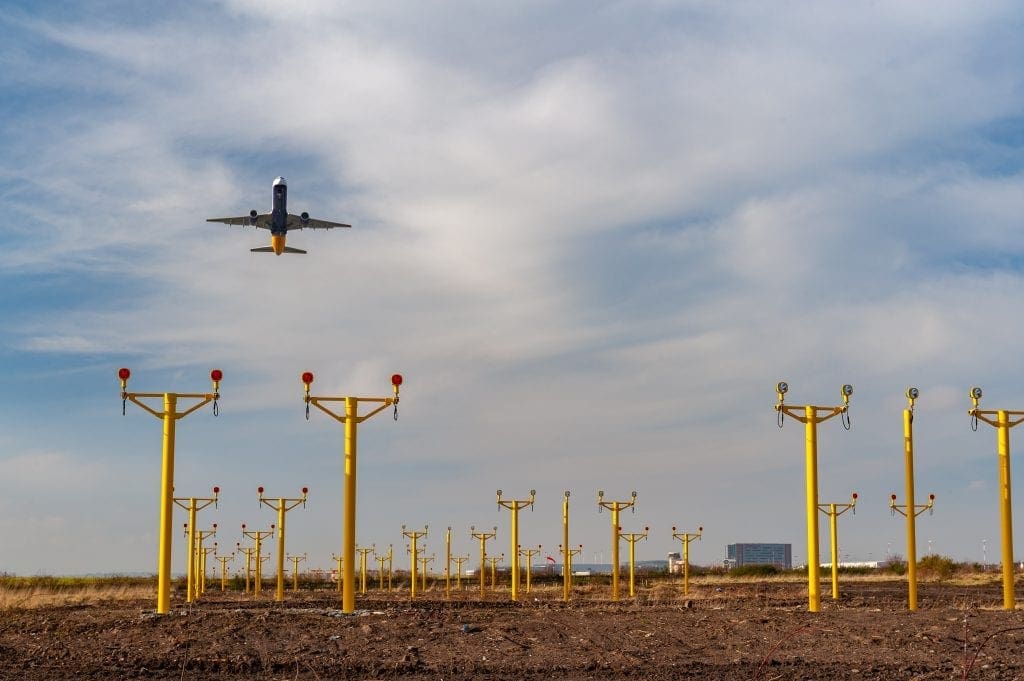The rules and regulations around airport structures are set by the FAA (Federal Aviation Administration) in the United States. The ICAO (International Civil Aviation Organization) set the rules on an international basis. These regulations have evolved over time in response to various factors and considerations. Several key factors have influenced changes in these rules. However, one incident in particular was deemed serious enough to warrant a significant change in regulations. This change was the introduction of frangible structures, which are designed to break on impact. This feature limits the damage caused in the case of plane accidents on the runway.

The incident
On 30th July 1971, Pan Am Flight 845 from San Francisco to Tokyo was taxiing along the runway before takeoff. There had been maintenance taking place on the scheduled runway earlier that day, and so alterations were made to the flight plans. Despite the runway being shorter, and the wind conditions less favourable on this alternate runway, a safe takeoff should still have been possible. However, the aircraft did not obtain sufficient altitude, and during takeoff it collided with a lighting structure at the end of the strip. This caused considerable damage to the plane.
Once in the air, the aircraft circled over the Pacific Ocean with the aim of jettisoning fuel in order to prepare for an emergency landing. It safely touched down again 1 hour and 42 minutes later. There were no fatalities, but two passengers were seriously injured when iron rods tore through and into the aircraft. This incident led to the American FAA introducing frangible structures at airports. A collision with a frangible lighting structure would have meant the structure breaking into fragments rather than causing damage to the plane and its passengers. The ICAO followed suit, adopting similar regulations in the early 1980s. The intent here was to reduce damage to aircraft, and dramatically reduce the chance of loss of life.
Other factors
 There have been additional factors over the years that have led to changes in the rules around airport structures. These include:
There have been additional factors over the years that have led to changes in the rules around airport structures. These include:
Advancements in aviation technology
As aviation technology has advanced, aircraft have become more capable, but also more sensitive to obstructions. Newer and larger aircraft require clear airspace for safe takeoff, landing, and navigation. These advancements have led to changes in the rules to accommodate the changing characteristics of aircraft.
Air traffic growth
The growth in air travel and increased air traffic has put pressure on airports to expand and modernise. This growth has necessitated changes to regulations around airport structures to ensure safe and efficient aviation operations. Airports have needed to adapt to accommodate more aircraft and passengers.
Urban and regional development
Urban and regional development has encroached on airports and their surroundings. This has required changes in regulations to manage the interactions between airports and their neighbouring communities. This often leads to airport zoning regulations and restrictions on certain types of development.
International co-operation
ICAO, as a global organisation, plays a key role in harmonising aviation regulations and standards internationally. Changes in ICAO rules often reflect the need for a coordinated global approach, ensuring the safety of international air travel.
Environmental concerns
Environmental factors, such as noise and emissions, have become increasingly important in aviation. Regulations around airport structures include provisions to mitigate the environmental impact of airports and the structures around them.
Accident and incident data
In addition to the incident involving the Pan Am Flight in 1971, further incidents have occurred. Analysing accident and incident data since 1971 has revealed potential safety hazards related to airport structures. When trends or specific incidents point to risks associated with certain types of structures or their placement, rules and guidelines are revised to address these concerns.
Changes to rules and regulations around airport structures are typically driven by a combination of these factors. Input from aviation experts, engineers, and government agencies is also sought. The goal is to adapt and improve regulations to enhance safety, accommodate growth, and address evolving challenges in the aviation industry.
How can Pollite help you?
Pollite are a global leader in the manufacture and supply of frangible masts for the aviation industry. All our masts are fully ICAO and FAA approved for frangibility. Masts have also been tested to ensure compliance with deflection, wind speed, UV and salt spray requirements. Contact us for more information and to discuss your project requirements.